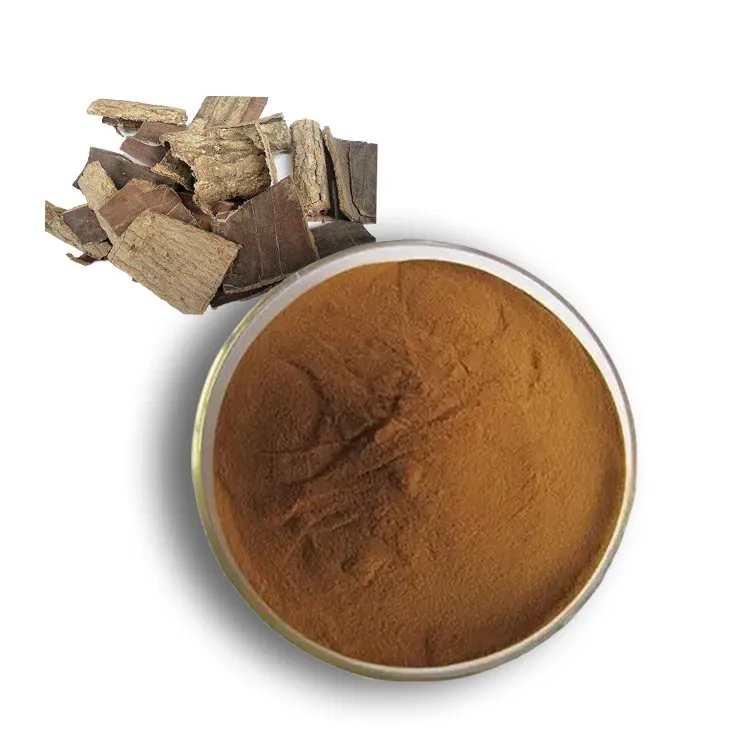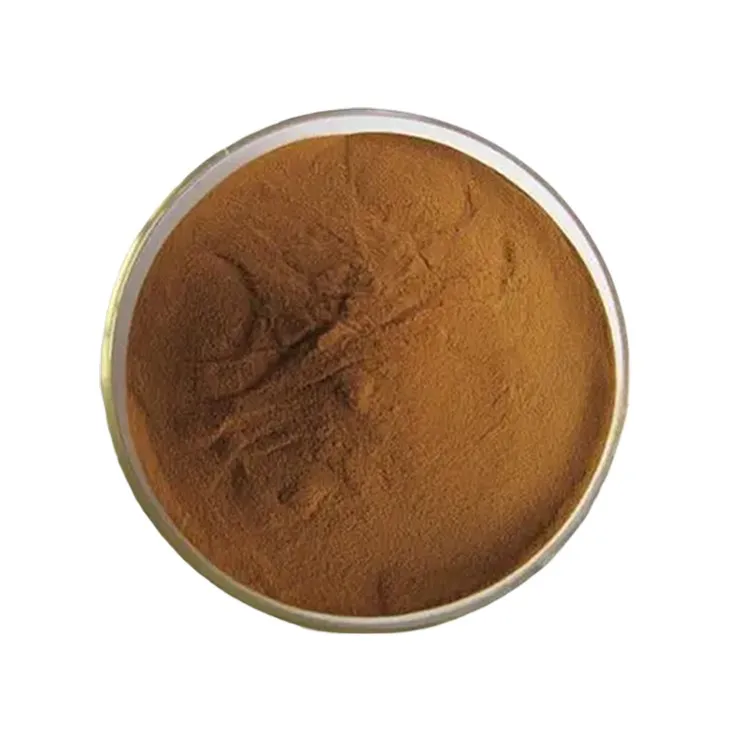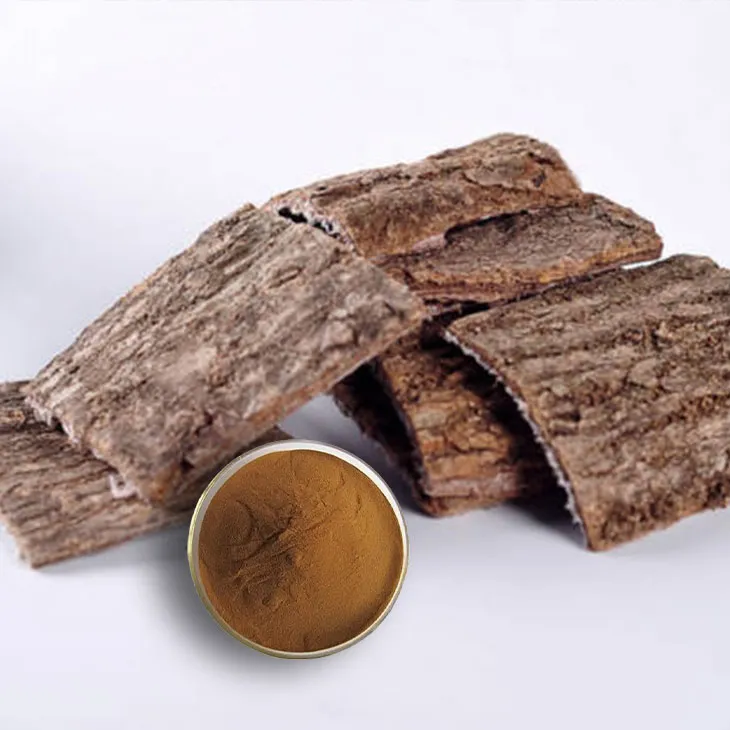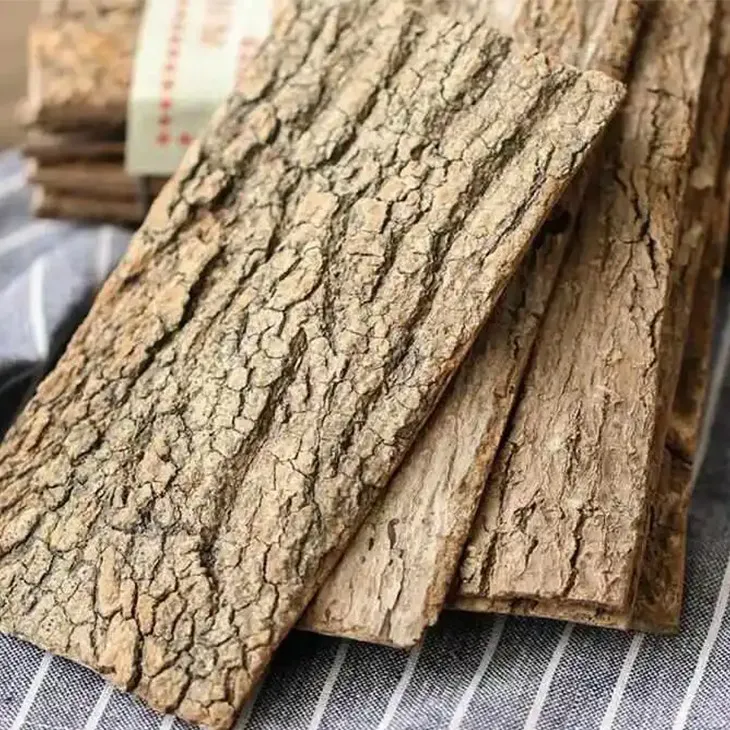- 0086-571-85302990
- sales@greenskybio.com
Extraction process of Eucommia ulmoides extract.
2024-11-28

1. Introduction
Eucommia ulmoides has been highly valued for its rich bioactive components. These components have attracted the attention of the fields of natural medicine and functional food. Therefore, the extraction of Eucommia Ulmoides Extract has become an important research topic. The extraction process aims to obtain the beneficial substances from Eucommia ulmoides in a concentrated form for further applications.

2. Procurement of Eucommia ulmoides Materials
The first step in the extraction of Eucommia Ulmoides Extract is the procurement of high - quality materials. Quality control at this stage is crucial as it directly affects the final product.
2.1. Source Selection
Eucommia ulmoides can be sourced from different regions. However, the quality may vary depending on factors such as soil, climate, and cultivation methods. For example, Eucommia ulmoides grown in certain regions with suitable environmental conditions may have a higher content of bioactive components. Therefore, careful selection of the source is necessary.
2.2. Harvesting Time
The harvesting time also plays an important role. Different growth stages of Eucommia ulmoides may result in different levels of bioactive components. Generally, harvesting at the appropriate maturity stage can ensure a higher yield of the desired substances. For instance, if harvested too early, the plants may not have fully developed their bioactive components, while if harvested too late, some components may start to degrade.

3. Traditional Maceration Extraction
Maceration extraction is one of the traditional methods for extracting Eucommia Ulmoides Extract, and it is still useful today.
3.1. Solvent Selection
The choice of solvent is a key factor in maceration extraction. Common solvents include water, ethanol, and methanol. Water is a natural and environmentally friendly solvent, but it may not be able to extract all types of bioactive components effectively. Ethanol, on the other hand, has a better extraction ability for many lipophilic and hydrophilic components. Methanol also has good extraction properties, but it is more toxic and requires more careful handling.
3.2. Maceration Process
- First, the Eucommia ulmoides materials are prepared, usually by grinding or chopping them into small pieces to increase the surface area for better extraction.
- Then, the plant materials are soaked in the selected solvent. The ratio of plant materials to solvent is an important parameter. A proper ratio can ensure sufficient extraction while avoiding excessive waste of solvent. For example, a ratio of 1:5 or 1:10 (plant materials: solvent) is often used.
- The maceration is carried out for a certain period, which can range from several hours to several days. Longer maceration time may increase the extraction yield, but it may also lead to the extraction of more impurities. During the maceration process, occasional stirring can enhance the mass transfer and improve the extraction efficiency.
- After the maceration, the extract is separated from the plant residues. This can be done by filtration or centrifugation. Filtration is a simple and commonly used method, using filter papers or filters with different pore sizes to remove the solid residues. Centrifugation can also achieve good separation results, especially for finer particles.

4. New Extraction Technologies - Enzyme - Assisted Extraction
Enzyme - assisted extraction is an emerging technology in the extraction of Eucommia ulmoides extract, which offers some advantages over traditional methods.
4.1. Enzyme Selection
- Cellulase is often used in enzyme - assisted extraction of Eucommia ulmoides. Cellulase can degrade the cell wall components of plants, mainly cellulose. By breaking down the cell walls, the bioactive components inside the cells can be more easily released, thus increasing the extraction efficiency.
- Other enzymes such as pectinase may also be used in combination. Pectinase can act on the pectin in the cell walls, further facilitating the breakdown of the cell structure and the release of active ingredients.
4.2. Enzyme - Assisted Extraction Process
- The Eucommia ulmoides materials are first treated with the selected enzymes. The enzyme concentration, treatment temperature, and treatment time are important factors to consider. For example, a cellulase concentration of 1 - 5% (w/v), a treatment temperature of 40 - 60°C, and a treatment time of 1 - 3 hours are commonly used parameters.
- After the enzyme treatment, the extraction process is similar to the traditional maceration extraction. The plant materials are soaked in a solvent (usually ethanol or water - ethanol mixture) for further extraction of the bioactive components.
- The extract is then separated from the plant residues in the same way as in maceration extraction, either by filtration or centrifugation.

5. Concentration and Purification of the Extract
After the extraction, the obtained extract usually needs to be concentrated and purified to obtain a more concentrated form of the beneficial substances.
5.1. Concentration
- One common method for concentration is evaporation. Evaporation can be carried out under reduced pressure to lower the boiling point of the solvent and reduce the damage to the bioactive components. Rotary evaporators are often used for this purpose. By evaporating the solvent, the volume of the extract is reduced, and the concentration of the bioactive components is increased.
- Another method is membrane concentration. Membrane concentration uses semi - permeable membranes to separate the solvent from the solutes. This method has the advantage of being able to preserve the bioactive components better as it operates at a relatively low temperature and without the need for high - energy evaporation.
5.2. Purification
- Column chromatography is a widely used purification method. Different types of columns, such as silica gel columns or ion - exchange columns, can be used depending on the nature of the bioactive components to be purified. The components are separated based on their different affinities to the stationary phase in the column.
- Preparative HPLC (High - Performance Liquid Chromatography) can also be used for purification. It can achieve high - resolution separation of the components in the extract. However, it is a relatively expensive method and requires more sophisticated equipment and expertise.
6. Quality Evaluation of Eucommia ulmoides Extract
After the extraction, concentration, and purification processes, it is necessary to evaluate the quality of the Eucommia ulmoides extract.
6.1. Chemical Component Analysis
- Analysis of the main bioactive components, such as flavonoids, phenolic acids, and terpenoids, is essential. Various analytical techniques can be used, including HPLC, GC - MS (Gas Chromatography - Mass Spectrometry), and UV - Vis spectroscopy. HPLC can accurately determine the content and purity of the components, GC - MS can identify the chemical structures of the components, and UV - Vis spectroscopy can be used for preliminary screening and quantification.
- Determination of the impurity content is also important. High levels of impurities may affect the quality and safety of the extract. Impurities may include residual solvents, heavy metals, and other unwanted substances.
6.2. Biological Activity Evaluation
- The Eucommia ulmoides extract is expected to have certain biological activities, such as antioxidant, anti - inflammatory, and antihypertensive activities. Antioxidant activity can be evaluated by methods such as DPPH (2,2 - Diphenyl - 1 - picrylhydrazyl) radical scavenging assay and ABTS (2,2' - Azinobis - (3 - ethylbenzothiazoline - 6 - sulfonic acid)) radical scavenging assay. These assays measure the ability of the extract to scavenge free radicals, which is an important indicator of its antioxidant potential.
- Anti - inflammatory activity can be tested in vitro using cell models, such as macrophages, to observe the effect of the extract on the production of inflammatory mediators. In vivo animal models can also be used to evaluate the anti - inflammatory effect in a more comprehensive way.
- Antihypertensive activity can be evaluated by measuring the blood pressure changes in hypertensive animal models after the administration of the extract. These biological activity evaluations can help to confirm the potential health benefits of the Eucommia ulmoides extract.
7. Conclusion
The extraction process of Eucommia ulmoides extract involves multiple steps, from the procurement of high - quality materials to the final quality evaluation. Traditional methods like maceration extraction are still useful, while new technologies such as enzyme - assisted extraction offer new opportunities for more efficient extraction. Concentration and purification processes are necessary to obtain a high - quality extract. Quality evaluation, including chemical component analysis and biological activity evaluation, is crucial to ensure the safety and efficacy of the extract. With the development of technology, it is expected that more advanced and efficient extraction methods will be developed in the future, further promoting the application of Eucommia ulmoides extract in the fields of natural medicine and functional food.
FAQ:
What are the main bioactive components in Eucommia ulmoides?
Eucommia ulmoides contains various bioactive components such as flavonoids, iridoids, lignans, and polysaccharides. These components are believed to contribute to its potential health - promoting effects, like antioxidant, anti - inflammatory, and hypotensive activities.
Why is enzyme - assisted extraction considered better in some cases for Eucommia ulmoides extract?
Enzyme - assisted extraction can be advantageous because specific enzymes can break down the cell wall components of Eucommia ulmoides. This breakdown makes it easier for the active ingredients to be released into the solvent, resulting in potentially higher extraction yields and more efficient extraction compared to traditional methods in some cases.
How long does the maceration extraction of Eucommia ulmoides usually take?
The duration of maceration extraction can vary depending on several factors such as the nature of the solvent used, the particle size of the plant materials, and the desired concentration of the extract. Generally, it can range from a few days to several weeks.
What are the applications of Eucommia ulmoides extract in functional foods?
Eucommia ulmoides extract can be used in functional foods for various purposes. For example, its potential antioxidant and anti - inflammatory properties may contribute to overall health improvement. It can also be added to products to potentially enhance physical performance or support cardiovascular health.
What quality control measures are important during the extraction of Eucommia ulmoides extract?
Quality control during extraction is crucial. This includes ensuring the purity of the solvent used, controlling the extraction temperature and time precisely, and regularly testing the extract for the presence and concentration of the desired bioactive components. Also, proper handling and storage of the raw materials and the extract are essential to maintain quality.
Related literature
- Extraction and Bioactivity of Bioactive Compounds from Eucommia ulmoides Oliv."
- "Advances in the Extraction Technology of Eucommia ulmoides Extracts."
- ▶ Hesperidin
- ▶ citrus bioflavonoids
- ▶ plant extract
- ▶ lycopene
- ▶ Diosmin
- ▶ Grape seed extract
- ▶ Sea buckthorn Juice Powder
- ▶ Beetroot powder
- ▶ Hops Extract
- ▶ Artichoke Extract
- ▶ Reishi mushroom extract
- ▶ Astaxanthin
- ▶ Green Tea Extract
- ▶ Curcumin Extract
- ▶ Horse Chestnut Extract
- ▶ Other Problems
- ▶ Boswellia Serrata Extract
- ▶ Resveratrol Extract
- ▶ Marigold Extract
- ▶ Grape Leaf Extract
- ▶ blog3
- ▶ blog4
-
The best honeysuckle pollen on the market.
2024-11-28
-
The Best Rosemary Extract in 2024.
2024-11-28
-
The best - quality feverfew extract.
2024-11-28
-
The best organic aged garlic extract.
2024-11-28
-
Konjac flour manufacturers from China.
2024-11-28
-
Certified organic comfrey extract.
2024-11-28
-
The best sophora japonica extract in 2024.
2024-11-28
-
Bilberry Extract
2024-11-28
-
Angelica sinensis extract
2024-11-28
-
Licorice Root Extract Powder
2024-11-28
-
Black Rice Extract
2024-11-28
-
Red Vine Extract
2024-11-28
-
Acai Berry Extract
2024-11-28
-
Cranberry Extract
2024-11-28
-
Reishi mushroom extract
2024-11-28
-
Senna Leaf Extract
2024-11-28
-
Baicalin
2024-11-28





















